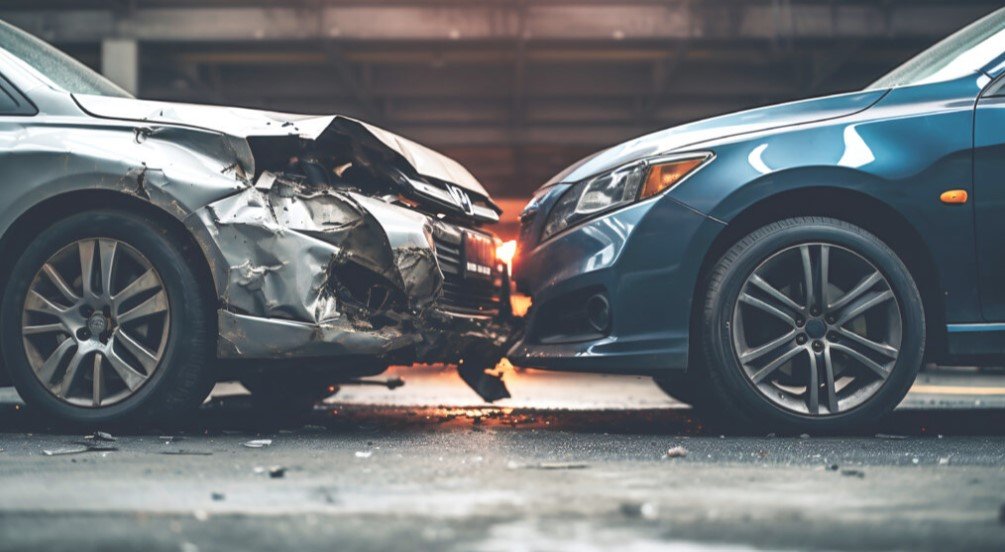Steps to Take After a Car Accident for an Insurance Claim

Steps to Take After a Car Accident for an Insurance Claim
Although car accidents can be traumatic, understanding what to do following one will help the insurance claims process go far more smoothly. Whether minor or major, if you have been in an automobile accident, following the correct actions straight away will assist you legally, financially, and emotionally safeguard yourself. This article will guide you through the procedures to follow after a car accident for an insurance claim, ensuring your complete readiness to manage the circumstances effectively.
1. Ensure Safety First
Your first thought should be about the safety of yourself and everyone involved in the accident before worrying about anything else. Look for injuries; if you are able, make sure everyone else engaged is also fiIn the event of an injury, promptly contact emergency services to ensure immediate medical attention.red.
If the cars are still under use, relocate them to the side of the road to stop more mishaps or traffic congestion. To signal other cars, turn on your danger lights.
If the collision happens in a crowded place with heavy traffic, stay inside the car until it’s safe to get out.
2. Call the police.
Generally speaking, especially in cases of injuries, property damage, or hit-and-run, it is imperative to call the authorities following an accident. Since a police report offers an official record of the incident, your insurance claim usually requires one.
File a report. Give the police your information and any collision details when they arrive.
Get the report number here: When you submit your insurance claim, this data will be helpful.
3. Exchange information.
A crucial first step in filing an insurance claim is gathering accurate information from all accident participants. You should exchange the information with the other driver.
Names and contact information require addresses, phone numbers, and email addresses.
License numbers for drivers: Get the vehicle registration number and the license details of the other driver.
Insurance specifics: For both sides, be sure you have the policy number, name of the insurance company, and contact details.
Witness records: Get the names and phone details of any accident witnesses; they should exist as well.
4. Document the accident scene.
When it comes time to submit an insurance claim, capturing photos and taking notes could prove to be quite beneficial. The more proof you can provide, the higher your chances of obtaining a just compensation.
Take pictures of the damages. Photograph clearly any damage to your automobile, the other car or vehicle, and the accident scene. This covers any skid marks, traffic signals, or road conditions that might have caused the collision.
Pay attention to the specifics: Jot down the time of day, the temperature, and everything else that might be pertinent. When deciding on culpability, these specifics can be crucial.
5. Notify your insurance company.
After ensuring everyone’s safety and ensuring the correct records are in place, it’s time to call your insurance company. To guarantee a seamless start of the process, you must submit an insurance claim right away following the accident.
Report the incident right away. Don’t wait; most insurance companies mandate reporting of an accident within 24 to 48 hours.
Share all pertinent details. Be ready to provide your insurance all the material you have acquired—pictures, police reports, witness details, etc.—when you call. This will speed the claim procedure.
Be honest and accurate. Tell a straight, factual story of the accident without omitting any specifics. Any discrepancies may lead to the delay or denial of your claim.
6. Avoid admitting fault at the scene.
Apologising or accepting responsibility at the scene of the accident could be tempting, but at that moment it’s crucial to resist admitting fault—either orally or in writing. You might be unaware of elements involved even if you feel guilty. Based on the data and reports, the insurance companies and law enforcement will decide who is at fault instead of depending simply on your initial words.
Try not to argue. While you keep your contacts with the other motorist peaceful and courteous, avoid talking about responsibility or guilt at the scene.
Let the insurance writers take care of it. To establish liability, the claims adjusters will go over police records and witness testimony, among other sources.
7. Seek medical attention if needed.
See a doctor following an automobile accident, even if you don’t feel instantly hurt. Some injuries, including soft tissue damage or whiplash, could not exhibit symptoms right away but might get worse with time. If you sustain an injury, your medical records are crucial for your insurance claim, as they provide proof of the injury and the necessary treatment.
Track your injuries: Track any injuries and treatments; make sure your doctor notes any symptoms starting with the accident.
8. Deal with a claims adjuster.
Your insurance provider will select a claims adjuster to investigate the accident and assess the damage to your car. Reviewing all the data—including pictures, witness accounts, and police reports—the adjuster will decide how much your insurance company should pay for medical bills and repairs.
Completely cooperate: Respond to any needs the claims adjuster raises. In order to handle your claim, the adjuster may require additional details or explanation.
Get estimates for repairs: Your car could need estimates from approved repair facilities. While some insurance companies have preferred stores, you usually have the opportunity to pick your own.
9. Review Your Policy of Coverage.
Reviewing your personal insurance policy will help you better appreciate the coverage you have after an accident. Policies vary depending on area, provider, and coverage type; so, it is crucial to know how your policy performs in the framework of your claim.
Know your coverage limits. Particularly concerning damages, medical bills, and missed pay, understand the scope and limitations of your policy.
Know your deductible. Should your insurance policy have a deductible, know how much you will have to pay out-of-pocket before your insurance starts to pay.
10. Consider hiring an attorney.
Hiring a personal injury attorney may be useful if the accident involves complicated legal questions including several parties, major injuries, or culpability disputes. An attorney can guarantee that you get the amount you are due and help you negotiate the insurance and legal sides of the claim.
Legal counsel: Should you have to sue, a lawyer can represent you and provide insightful guidance on handling insurance companies.
Many personal injury lawyers offer free consultations, allowing you to explore your options without any upfront legal price commitment.
11. Monitor Your Claim’s Progress
Keep up with the process by routinely contacting your insurance once you have your claim turned in. Make sure the claims adjuster is promptly handling your claim and has all the necessary information by following up with them.
Keep neat: For convenient access, keep all accident-related documentation and correspondence in one location.
Request updates. If delays occur, request claim updates immediately.
12. Recognize the claimed outcome.
Once the insurance company completes their research, they will decide on your claim. This could call for a settlement offer including medical bills, repairs, additional damages, and payment for expenses.
Review the proposal: If you are satisfied with the offer, you can proceed with it. If the offer appears excessively low, you have the right to file an appeal or engage in negotiations.
If necessary, ask for more help. Should you be unhappy with the result of your claim, you can escalate the matter either by legal action or through discussions.
13. Fix your motor vehicle.
Once your insurance provider pays your claim, you can begin the process of fixing your car. Should your insurance provider decide to reimburse the repair expenses, they could deal directly with the repair facility to pay for the service.
If your insurer has a preferred provider, consider using them; however, you can also select a repair shop of your preference as long as it meets the insurer’s requirements.
14. Close the argument.
Once you have completed all repairs, paid all medical expenses, and handled any further settlements, you can formally close your claim. Ensure that you have completed all your documentation and received full payment for any medical bills or damages.
Contact your insurer to confirm that the claim is closed and all obligations are met.
Final Thoughts
Although handling an automobile accident is never simple, following these guidelines may enable you to more quickly negotiate the insurance claim procedure. Keep your cool, compile all required records, and closely coordinate with insurance to guarantee you get the reimbursement you are due. Following the correct procedures helps you to ease the tension in the matter and concentrate on accident recovery.






